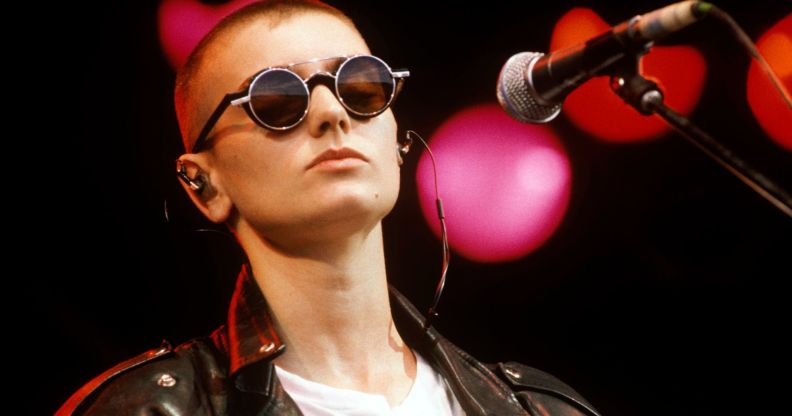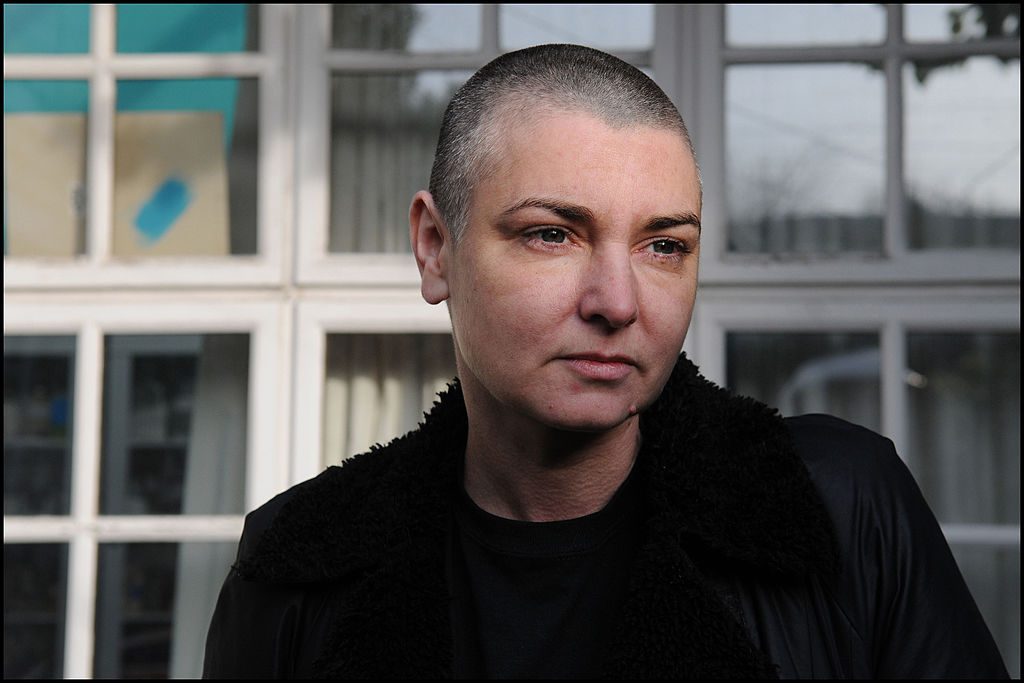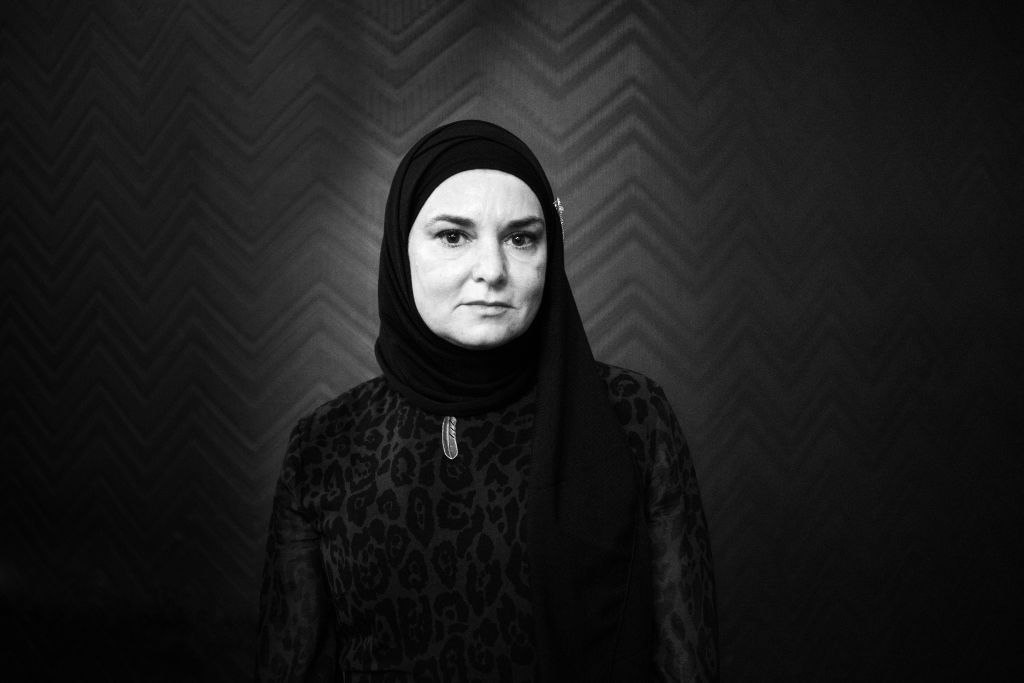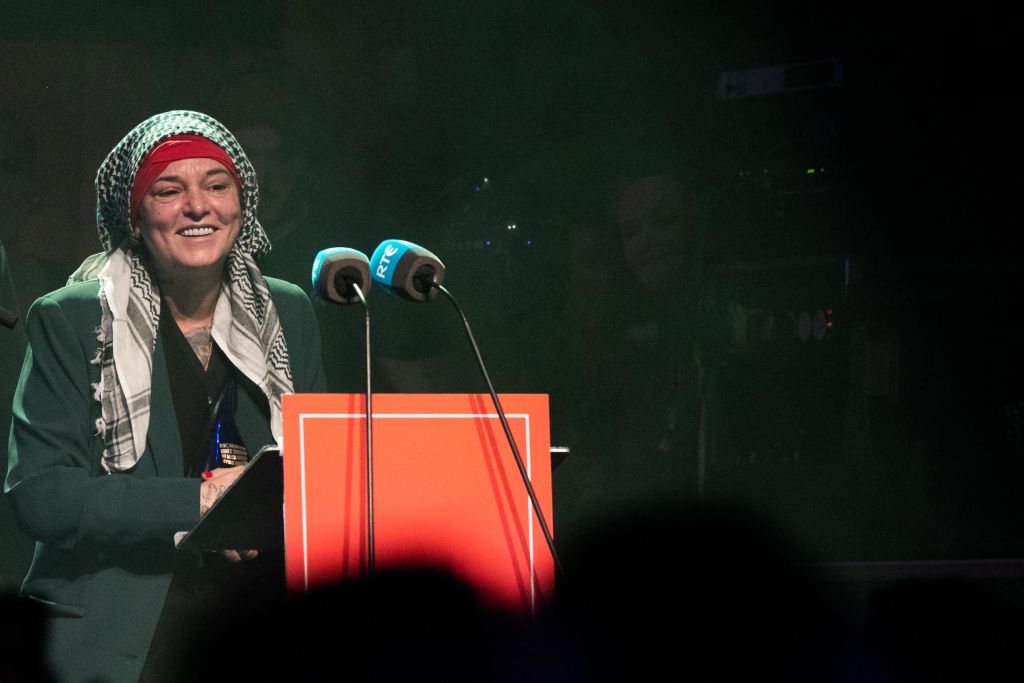Sinéad O’Connor risked it all to give voice to the powerless and call out the Catholic Church

Sinéad O’Connor performing at Glastonbury in 1991. (Getty)
Sinéad O'Connor performing at Glastonbury in 1991. (Getty)
Sinéad O’Connor, who sadly died on Wednesday (26 July), didn’t care for fame or success – she used her talents to speak truth to power when so many others were willing to stay quiet.
There was a nervousness – or perhaps a breathless sense of anticipation – about Sinéad O’Connor when she opened her mouth to sing Bob Marley’s “War” on SNL in October 1992.
In an entirely a capella performance, O’Connor stared unflinchingly into the camera, holding the gaze of millions of people watching at home as she sang about war and the quest for basic human rights.
As if the performance wasn’t already dramatically out of step with the American pop music landscape of the day, Sinéad O’Connor then pulled out a photograph of Pope John Paul II and tore it into pieces. Tossing them aside, she declared: “Fight the real enemy.”
It might seem remarkable now, but O’Connor’s act of protest – designed to draw attention to the sexual abuse of children within the Catholic Church – was far from popular. America was not ready to hear her message, nor was her native Ireland.
The following week, actor Joe Pesci held up the same photograph during his opening monologue on SNL and announced that he had taped it back together. He received a huge round of applause before announcing that, if it had been his show, he would have “gave her such a smack”.
Sinéad O’Connor was mocked over her SNL performance
He seemingly represented how America was feeling. Just two weeks after her SNL performance, O’Connor was loudly booed while performing at a Bob Dylan concert. She responded by launching into “War” instead of the song she was supposed to sing, but she ran off stage before reaching the end.

Even Madonna, then seen as one of the great provocateurs of pop music, responded angrily. Speaking to The Irish Times, she said: “I think there is a better way to present her ideas rather than ripping up an image that means a lot to other people.”
During a 1993 SNL performance, Madonna held up a picture of Joey Buttafuoco, a Long Island mechanic who had become a tabloid fixture over his relationship with a 17 year old girl, and tore it up, repeating O’Connor’s “fight the real enemy” line. It was widely seen as a dig – a somewhat cruel jibe at a fellow musician who had put her career on the line to make a point.
In the end, the barrage of hate that came O’Connor’s way proved insurmountable. Her stateside career was effectively over, and she was banished back to Ireland, where people were just as reluctant to hear what she had to say about the Catholic Church.
You might think she would have been upset to see her success upended overnight – but in her 2021 memoir Rememberings she paints a very different picture. The SNL performance wasn’t what derailed her career, she said – it was having a number one hit in the first place.
Tearing up the picture of Pope John Paul II, she said, put her back on the right track.
Sinéad O’Connor shaved her head in protest against record label bosses
In some ways, that tells you all you need to know about Sinéad O’Connor. She was a wildly talented singer and songwriter with a bracing voice that captivated millions – and yet, mainstream success meant little to her. In fact, she actively pushed against it right from the start of her career, when she shaved her head after record label executives told her to grow her hair long and wear high heels.

“I wasn’t going to have any man telling me what to do, or who to be,” she later said of that early decision.
Her shaved head became symbolic of just how much of a strong-willed outsider she was. O’Connor resolutely refused to be a part of a music industry that demanded women be malleable and pretty – and she certainly wasn’t interested in using her voice to make a label money.
She was more interested in using her gift to give power to the powerless. With her bracing voice, she captured the depth of feeling that comes with living in a world where inequality and abuse are all too common.
Her SNL appearance might have led to her effectively being exiled from America, but O’Connor kept making music, and she gradually built a somewhat less mainstream career for herself. In her native Ireland, she eventually became known as an icon – one of the greats who defined a generation not just for her unique voice or for her craft, but for her refusal to stop talking about injustice and inequality.
In the years after O’Connor tore up her picture of Pope John Paul II, Ireland finally started coming to terms with the decades of abuse that had been perpetuated and covered up by the church. A chink of light quickly turned into an unstoppable flood as countless people spoke up about the appalling injustices they had been exposed to – often as children – at the hands of priests who were supposed to care for them.

There have been commissions, reports, court cases and public reckonings in the years since – and not just in Ireland, all across the world. Once seen as controversial or untouchable, O’Connor has now gone down in history as one of the few public figures who was prepared to speak truth to power when so many others were willing to stay quiet.
She proved once again that she would never stop advocating for the most vulnerable at her last major public appearance at the Choice Music Awards in Dublin in March. After winning the Classic Irish Album award for I Do Not Want What I Haven’t Got, O’Connor dedicated her win to Ireland’s refugees.
“I’m really delighted with this, thanks,” O’Connor said.
“And I want to dedicate it to each and every member of Ireland’s refugee community. Not just the Ukrainian ones, you’re all very welcome in Ireland. And I love you very much and wish you happiness.”
That speaks to the kind of person Sinéad O’Connor was. She was a deeply empathetic figure who was pilloried, abused and torn down, all because she dared to speak out in support of the marginalised and the maligned.
As the world mourns her death, she should be remembered not just for her powerful voice, but also for her unflinching quest to build a better world for everyone.

